Official archaeology in India is now over a century old: in December 1961 the Archaeological Survey of India, a Government department and the chief antiquarian organization in the country, celebrated its centenary. One of the functions in the celebration was an International Conference on Asian Archaeology, the first of its kind, which was attended by a large number of archaeologists from different countries and evoked great interest.
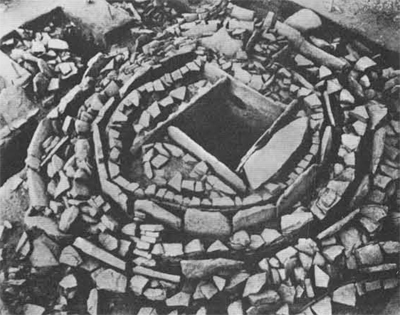
But antiquarian studies in the country began even earlier than 1861; promoted by a few British administrators, they go back to the second half of the eighteenth century. Though antiquarian pursuits were then inevitably mixed up with the study of languages, religions, and traditions and were imbued with a sense of romance, one does come across even in the early decades of the nineteenth century stray attempts at objective descriptions of ancient remains. And a great stride was taken in 1837, when a mint-officer, James Prinsep, a scholar of remarkable insight and inquisitiveness, deciphered the early script of India and thus laid Indian epigraphy and palaeography, and incidentally history too, on a firm basis.
When, therefore, in 1861, an army engineer, Alexander Cunningham, pleaded for the establishment of an Arcaheological Survey of India and succeeded in his attempt, the time was mature for systematic explorations. For the next twenty-four years Cunningham, who himself headed the Survey, together with his assistants, visited and re-visited sites and monuments, reported on them and even carried out excavations at some places. The itineraries of the early Chinese pilgrims were Cunningham’s chief guide: following them he was able to identify many an ancient site, for which he had a remarkable intuition. At the same time, this imparted to his work a bias for historical archaeology, particularly for Buddhist remains. It may be said that Buddhist archaeology (if such a term is permissible) did the same thing in India that Classical archaeology did in Europe at the early stages. Again, as in Europe of those times, the approach to archaeology was chiefly from the museum point of view–the collection of museum-worthy objects.
This will explain Cunningham’s attitude and aptitude. The pioneering work on the megaliths of South India by Meadows Taylor in the fifties of the century and the first discovery of neoliths by LeMesurier in 1860 and of palaeoliths by Bruce Foote in 1863 were not regarded by Cunningham as worthy of notice. What is more, his own discovery of characteristic Harappan antiquities at Harappa itself in 1873 was left un-pursued, with the result that the no-famous Harappa culture had to wait for half a century more for its rediscovery.
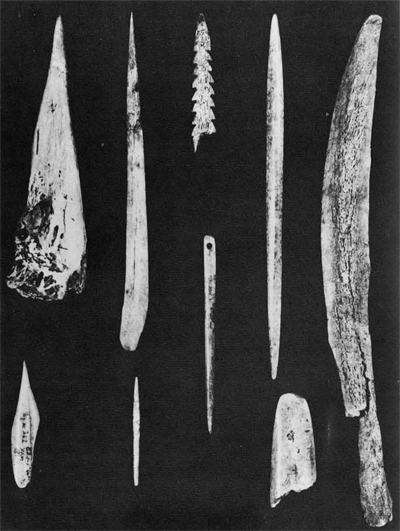
But the great amateur, roaming within the circumscribed field of his interest, laid a solid foundation for Indian archaeology. After his retirement in 1885 official apathy became dominant and a serious setback followed.
The turn of the century brought in a new era, which saw the resurrection of the Archaeological Survey of India: this time the preservation of monuments was definitely one of its functions. From 1902, when the transformation took place, to date, the framework of the Survey has remained virtually unaltered, but with large-scale adjustments to the constitutional changes and substantial expansions to meet the growing requirements.
Preservation of monuments will be left out of the scope of this article. In the field of exploration, the policy of concentrating on Buddhist sites remained largely unaltered during the first twenty years of the regime of John Marshall, who had become the Director General of the reconstituted Survey in 1902. Of the ancient city-states that were excavated during the period, mention may be made of Taxila in the northwest, the association of which with Alexander lent it a peculiar charm; Pataliputra in the vicinity of modern Patna, a pre-Christian capital of the central Gangetic region, supposedly laid out on an Achaemenian model; and Bhita further up the Gangetic Valley, which was believed to be an early commercial township. Each excavation was a unit by itself; there was no attempt at exposing and building up archaeological cultures–not to speak of establishing industrial sequences.
The outlook largely changed in the early twenties, when excavations at Harappa in Punjab (examined but bypassed by Cunningham) and at Mohenjo-daro in Sind opened up a new vista. For here were two well-planned cities, with similar relics, going back to the Bronze Age–more precisely, on the basis of certain finds in Iraq, to the second half of the third millennium B.C. The current ideas on the origins of civilization in India had to be quickly re-oriented to the challenge of the discovery of this culture (variously named “Indus civilization,” “Harappa civilization,” or “Harappa culture”), which evoked great interest in India and abroad. Systematic exploration that followed in Sind and Baluchistan revealed not only a chain of sites of this culture but of earlier and later ones. Commendable steps were thus taken to hunt out the extent, antecedence, and disappearance of the culture, but the technique of excavation at Harappa and Mohenjo-daro and other sites under Marshall has of late been criticized, not without justification.
The discovery of the Harappa culture dramatically added a brilliant chapter to Indian archaeology and attracted wide attention. At home, outside the circle of practising archaeologists, much that is fanciful has been written, and continues to be written, about its origins, chronology and affiliations–encouraged by the regrettable non-decipherment of the Indus script.
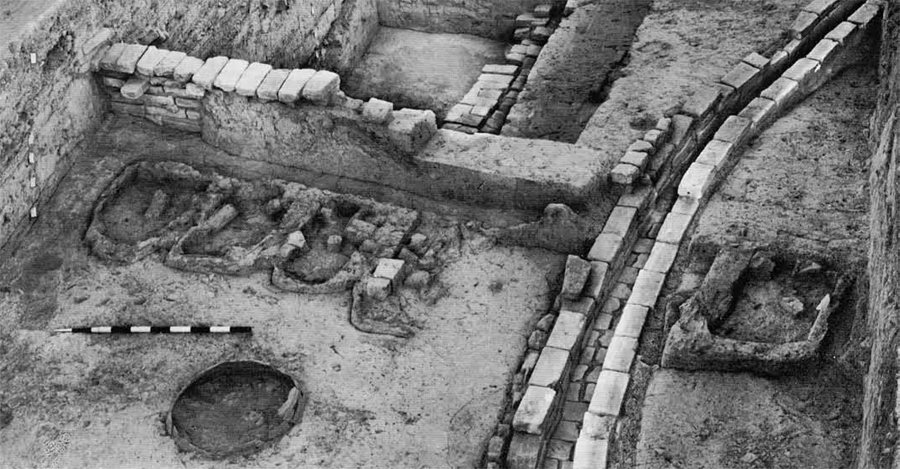
To the archaeologist the discovery posed varied problems, the chief of which was the enormous hiatus between the end of this culture and the beginnings of the historical period. Then again: what were the origins of this culture? Did the Vedic Aryans, till now unidentified archaeologically, meet it and have a hand in its destruction? What were the cultures in other parts of India before, during, and after its lifetime? Which of its elements, if any, survived in the later cultures and through which mechanism? Or was it merely an unlinked episode at the threshold of Indian civilization? Persistent efforts have been going on towards the solution of these problems, but while progress has been achieved it cannot be claimed that a final answer to any of them is as yet forthcoming. Besides the problems connected with the Harappa culture, many new ones relating to Indian prehistory and protohistory have now come to the fore, owing to the extensive work in progress all over the country by many an organization (in addition to the Archaeological Survey) whose coming ot the field is, by and large, a post-Independence development.
In 1944 Dr. R. E. (now Sir) Mortimer Wheeler took up the reins of the Archaeological Survey of India, and with him were introduced a new outlook on archaeology and the observance of stratigraphy in the field. Wheeler re-excavated Harappa and brought to light an extensive fortification around what might have formed the citadel–which changed the sociological concept of the Harappa culture–and a Harappan cemetery with extended burials, as distinct from the jar-burials which had previously exposed and which were no w proved to be post-Harappan. In south India he identified a Roman trading station on the east coast, which provided a datum-line for the archaeology of that region. Further, at another site the megaliths, which abound in south India and about which next to nothing had been known earlier, were shown to be much younger than their European counterparts, in spite of a tantalizing similarity of forms. An underlying chalcolithic culture was also identified.
Wheeler advocated a planned progress from the known to the unknown–from the periphery to the center. Since his departure a large number of research institutes and universities have come to the field, and the number is still on the increase. Each excavating body has naturally its own choice of sites, conditioned by many a factor. A unified and completely marshalled programme is no longer possible: the direct attacks are now from and towards many quarters and not merely from a spatial and temporal periphery. The results have been correspondingly accelerated many times more than would have been possible with a cautious approach. The apparent effect of the results may seem to be an unorganized mass of knowledge, “an untidy heap,” to quote Wheeler. But a broad picture has emerged within a remarkably short time. In a vast country with a varied past it would be futile to think of any uniformity in the cultural pattern, to expect every particle of the heap necessarily to conform to an anticipated picture. Below is given a brief survey of the forest, with blank patches here and there, that is the early archaeology of India today: to take into account the trees, sometimes non-conformist in character, that constitute the forest cannot be the function of this short article.
The earlier neglect of Stone Age archaeology has now been amply compensated. An enormous number of sites of the Early Stone Age have been located and their stratigraphy studied. The broad regional and typological division of the tools–the unifacial of the north and the bifacial of the south–has been confirmed, but there is no final evidence as yet on their relative chronology. Nor is there any definite correlation between the glacial and pluvial epochs of the north and south. Associated human remains are still lacking.
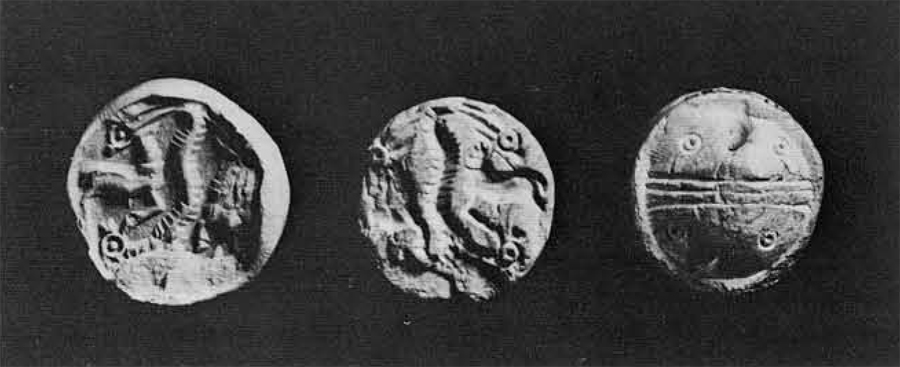
The Middle Stone Age, which seemingly followed after a hiatus of unknown duration, is represented by small flake-tools of fine-grained minerals. With its apparent focus in central India, it had a wide distribution.
The Late Stone Age is characterized by microliths of non-geometric shapes. They have been found in a limited number of widely separated places in varied geological horizons. While the data are admittedly scanty, their derivation from the preceding Age is not ruled out.
The evidence of a purely neolithic phase is paltry and is confined to the south and extreme north–Kashmir. In the first region, except that the folk were cattle-breeders, there is hardly any knowledge of their economy. In Kashmir the neolithic people were pit-dwellers and used bone tools in addition. The available Carbon-14 dates indicate late third and early second millennium B.C. dates for the southern and northern cultures.
Polished stone axes are widely found in a chalcolithic context in central India, the Deccan, and the South, with the addition of microliths, mainly consisting of parallel-sided blades produced by the “crested ridge guiding technique.” Of the many chalcolithic sites that have been excavated, at least two, Navdatoli and Nevasa, respectively in the Narmada and Godavari valleys, are noteworthy. While all the sites have a general family resemblance, the differentiae are not negligible, so that a homogenous culture need not be assumed. The ceramics include black-painted red ware varying in types and painted designs from place to place and often associated with black-and-red ware, sometimes painted in white. While the polished stone axe element of the culture may have found its way from the south, the pottery-painting tradition seems to have traveled in the reverse direction. Carbon-14 dates would place the beginnings of Navdatoli to the early 17th and its end to the 13th century B.C.
The important settlement at Ahar in southeast Rajasthan, with white-painted black-and-red ware as its dominant ceramic industry, has been dated to about 1800 B.C. on the same basis.
The type-sites of the Harappa culture now lie in Pakistan, but on the Indian side many sites have been located and some excavated. It is now known that the extent of the culture was much greater than had previously been suspected: on the east the culture had definitely crossed the Yamuna and perhaps also the Ganga; on the south it had travelled to Gujarat and even down to the Tapti estuary. Side by side, it is no longer justifiable to emphasize the unchanging character of the culture (which, according to some, lent it an “uncanny” aspect), for regional variations are now not lacking. At Kalibangan in north Rajasthan a full-blooded Harappan settlement has been found overlying the remains of an earlier culture, such as are found at many other sites in the region. This culture, now under study, may ultimately prove to have contributed to the origins and make-up of the Harappa culture. Lothal, on the Gulf of Cambay in the western peninsula of Gujarat, has been seen to have been a port with a large dockyard of the mature Harappa phase. Important in this context is the discovery here of a “Persian Gulf” seal.
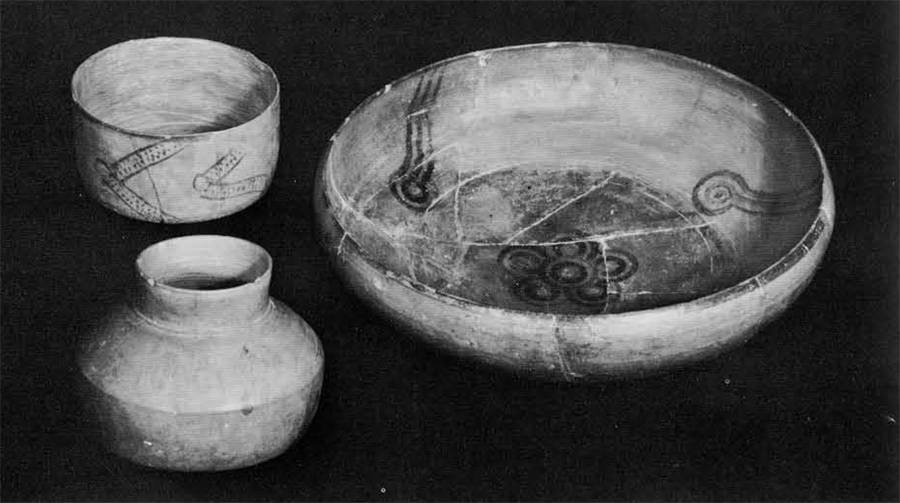
Carbon-14 determinations of samples from Kalibangan and Lothal would encourage a shortening of Harappa chronology with a terminal date of about 2000 B.C. At Lothal and Rangpur, another site not far off, the mature Harappa was followed by a culture evolved out of the former. This and the succeeding cultures of Rangpur must have been largely contemporary with the earlier-mentioned chalcolithic cultures of the interior.
Hoards of copper implements and other objects have been discovered from time to time in north India without any recorded archaeological context and have been variously ascribed to the Harappan refugees, the Aryans, or the indigenous peoples of India. In view of the proved expansion of the Harappa culture in the Gangetic valley, it now seems possible that the hoards represent the relics of the late Harappans, particularly as one of the specialized forms in the hoards, namely, a flat anthropomorphic figure, is found at Lothal as well.
At Rupar, on the upper Sutlej, the Harappan remains are overlain, after a break, by deposits the chief feature of which is the occurrence of what has now come to be known as the Painted Grey Ware. This ware, first encountered at Ahichchhatra in the upper Gangetic basin early in the forties, has now also been found at a very large number of sites in the upper Gangetic valley and further west. Its stratigraphic position–between the Harappan and the historical deposits–and its geographical distribution, raise the possibility that the Painted Grey Ware culture in reality belongs to the Aryans. No uniform Carbon-14 dates for this culture are as yet available: while in one case the date is something like 1000 B.C., in others it is considerably younger. further investigation in this regard is in progress.
Of late, white-painted black-and-red ware, mentioned above in connection with the chalcolithic cultures of southeast Rajasthan and central India, has been obtained from several sites in east India as well, also presumably in the chalcolithic context. One of the easternmost sites where it occurs lies on an eastern extension of the Chhota Nagpur plateau in West Bengal, where a few other pottery forms are also reminiscent of the central Indian industries. It would be premature to stretch this point too far, for, as has been observed, if one were to paint a black-and-red pot, white would obviously be the first choice. It also remains to be established how the chalcolithic black-and-red ware of the north is connected, if at all, with the ware that is characteristic of the Iron Age megaliths of the south.
The advent of the historical period in north India may be dated to the sixth century B.C., when large fortified cities sprang up, or reached a flourishing stage, in the Gangetic valley under large kingdoms. An urban civilization came to the fore: burnt-brick buildings, coins, and iron bespeak their prosperity. From shortly after this the archaeologist has coin-legends, inscriptions, and reliable recorded history to guide his datings. A distinctive highly-lustrous ware, known to archaeologists as the Northern Black Polished Ware, made its appearance and, perhaps aided by imperialistic expansions, spread far and wide. A cultural homogeneity is largely in evidence, at least in north India and the Deccan.
While it has not yet been possible in India to bring all that modern science has to give to the aid of archaeology, facilities for soil-analyses for environmental studies and chemical analyses of metals and alloys are fully available. The recent establishment of a Carbon-14 Laboratory in the Tata Institute of Fundamental Research, Bombay, has gone a long way in expediting Carbon-14 determinations of samples.
Facilities for training in archaeology exist at a few universities. The Archaeological Survey of India itself has recently established a School of Archaeology with a view to training students so that they can adopt archaeology as a profession.
It must be admitted that outside the archaeological circles in the country a genuine appraisal of the archaeological material and conclusions is not discernible among the public. While an outstanding discovery does evoke interest, it cannot be claimed that this is due to a proper realization of the archaeological value of the discovery. The living culture of India is a direct derivative of the culture that started shaping itself on the soil in at least the first millennium B.C. (or much earlier according to literary traditions). A sense of pseudo-patriotism is, therefore, noticeable in some quarters which want to see the glory and fantastic antiquity of the past reflected in archaeological discoveries. The historian, even if he is not an archaeologist, is no doubt quick to utilize archaeological conclusions in his own field, but instances where they are viewed with suspicion or apathy are not lacking. In spite of all this, the enormous expansion of archaeological activities during the last decade and a half is a phenomenon by itself, and there is no doubt that the public will attune itself to a scientific appreciation of archaeological methods and results within a short time. Says Sir Mortimer Wheeler: “Today, no part of the world is better served in archaeological matters than is the Republic of India.”
